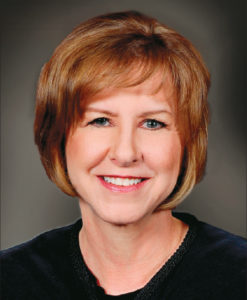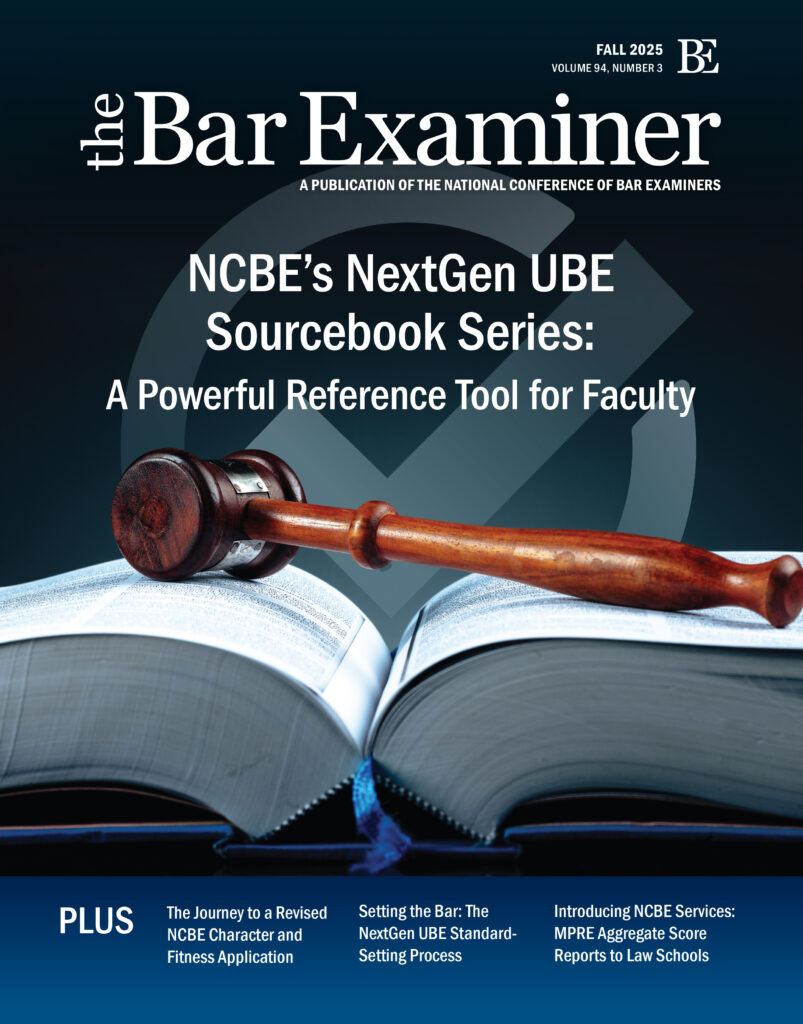This article originally appeared in The Bar Examiner print edition, Spring 2018 (Vol. 87, No. 1), pp 1–2.
By Hon. Rebecca White Berch

I have learned so much from my association with NCBE. As an Arizona bar examiner in the early to mid-1990s, I thought the Committee on Examinations in our state was doing a pretty good job preparing and grading our bar exam. We administered the MBE and, for the essay portion of the exam, we solicited questions from law professors from outside of our jurisdiction. We trained our graders and calibrated raw scores, and then had NCBE scale our essay exam scores to the MBE scores. We worked hard and were conscientious and well-intentioned.
But as I look back, with a decade of attending NCBE educational events and serving on NCBE’s test policy committees and Board of Trustees to inform my thinking, I can see that, in those early years, I actually knew fairly little about all that goes into the making, administration, and grading of a good, professional bar exam. This, even though I’d spent several years as a faculty member of a law school, a job that involved writing and grading both essay and multiple-choice questions.
It is this education and training that, as this year’s chair of NCBE’s Board of Trustees, I have endeavored to share with jurisdictions, justices, and bar examiners and administrators—and it is this message of professionalism and attention to research and detail that I have striven to take to the many groups to which I’ve spoken on behalf of NCBE during the past year. In recent weeks, along with NCBE President Judy Gundersen, I have appeared before the Council of the ABA Section of Legal Education and Admissions to the Bar and the Professionalism Committee of the Conference of Chief Justices, among other groups, to report on the business of NCBE and to answer questions from the members of those groups.
While the focus of such meetings is to provide an update on NCBE’s work, listeners are often surprised to learn how much behind-the-scenes work NCBE engages in. For example, at the moment, our recently launched Testing Task Force has embarked on its three-year future-oriented study of the bar examination (see this issue’s President’s Page for more detail); we have just launched a redesigned and updated online character report application; and we are engaging in substantial work to convert the paper-based MPRE to a computer-based platform.
Others are surprised to learn of the range of services NCBE provides for their jurisdictions and their test takers. Those services include expected ones, such as providing test products, score scaling and reporting, and character and fitness investigation reports. In addition, NCBE may provide psychometric research or statistical analysis on whether, for instance, an examinee cheated by copying from a neighbor during the MBE. It provides support to existing UBE jurisdictions and information to potential ones. NCBE also continually works to ensure the future relevancy of the bar exam by exploring other subjects, formats, and ideas that may improve the exam, or other services it might provide to jurisdictions. Perhaps due to the wealth of information we provide at these meetings, we have been pleased to find that our reception has been uniformly warm and positive.
So, what is on the horizon? As I write this, NCBE’s Annual Conference on April 19–22 is quickly approaching. This year’s site is the Philadelphia Marriott Downtown in historic downtown Philadelphia. NCBE staff and volunteers work very hard to ensure that the Annual Conference is informative, interesting, and—dare I say—entertaining. Under the leadership of last year’s Education Committee Chair Judge Cynthia Martin of Missouri (work being carried forward by current chair Timothy Wong of Minnesota), the Education Committee has fashioned a program that is both deep and broad-ranging, containing something for everyone. The conference features sessions on topics ranging from basic testing concepts to advanced concepts such as standard setting, as well as character and fitness, ADA compliance, grading, cheating, and test design, among others—along with presentations from leaders in legal education and the legal profession on research and initiatives in those fields. Regarding the standard setting subject, while the decision where to draw the cut score remains the domain of each jurisdiction, jurisdictions have asked for guidance from NCBE and its talented psychometricians in determining what exam scores mean and where on the range of scores an appropriate cut score might lie. The programming at every year’s Annual Conference reflects NCBE’s commitment to assist jurisdictions by providing them with information they need to make informed decisions as they carry out the all-important work of bar admissions.
As you can see, things remain busy and productive at NCBE. To our staff and volunteers: thank you for your service to NCBE. To the bar admission administrators and graders in every jurisdiction: thank you for your dedication to the bar examination process. Your commitment to ensuring the integrity of the bar exam, given the high stakes involved for aspiring lawyers and for the citizens in our jurisdictions, makes each of you an invaluable part of the process. Finally, to all our readers: thank you for your interest in and care about bar examining.
Sincerely,

Hon. Rebecca White Berch
Contact us to request a pdf file of the original article as it appeared in the print edition.







